Did you know that Loco Moco, the classic Hawaiian comfort food, is just as popular in Japan? In my version, I top steamed rice with juicy, tender Japanese hamburger steak and a fried egg, then smother it in a savory mushroom gravy. A satisfying meal any time of day!
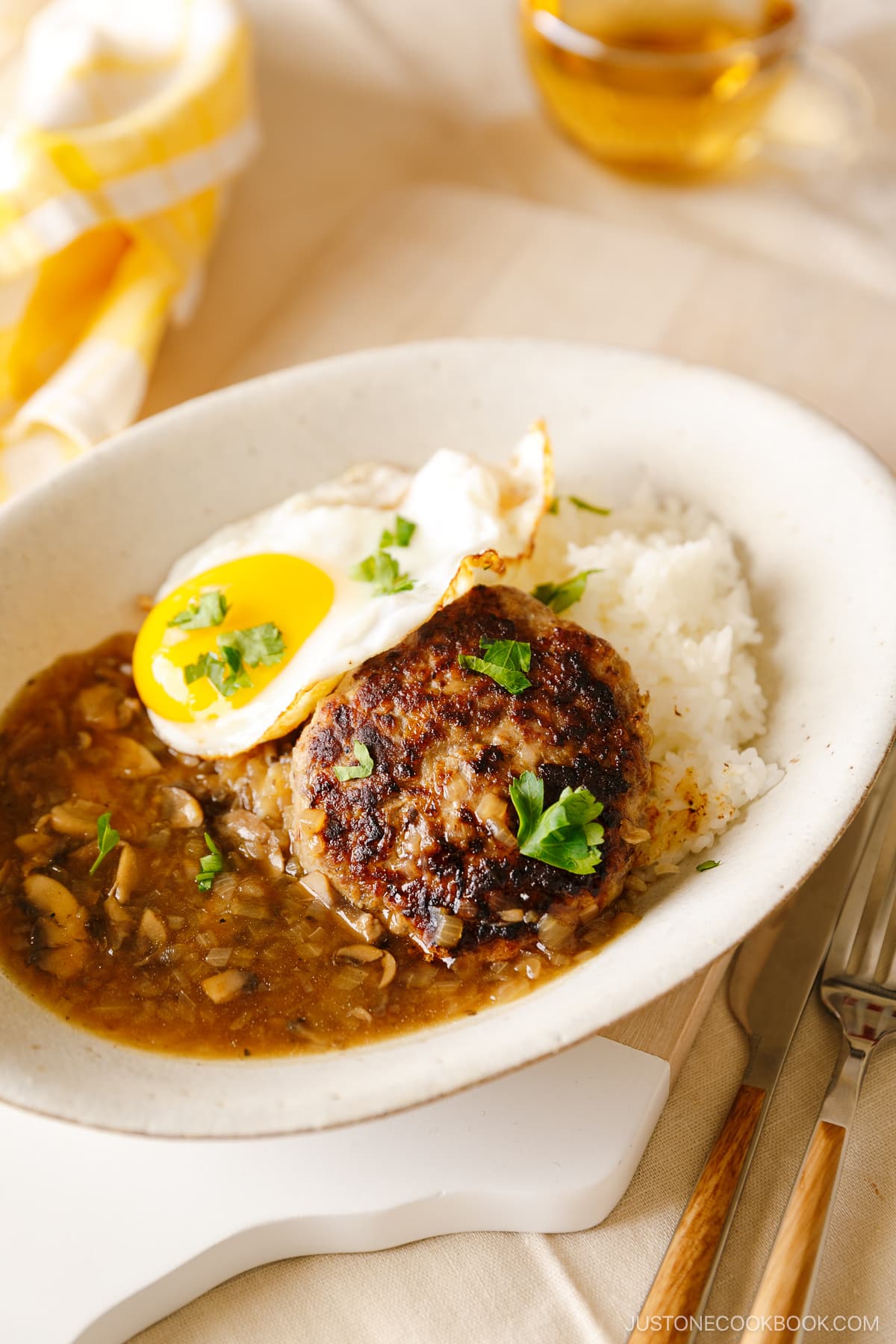
Loco Moco is one of the signature Hawaiian dishes that is extremely popular in the Aloha state and also in Japan. I grew up eating this Japanese-influenced American-style hamburger at family restaurants that served up amazing lines of comfort dishes. Yes, we love hamburgers in Japan.
These days, I love making loco moco whenever my kids have any sports activities and would get super ravenous for dinner. Juicy hamburger steak with fried egg and rice—that’s a combo to feed hungry kids!
Table of Contents
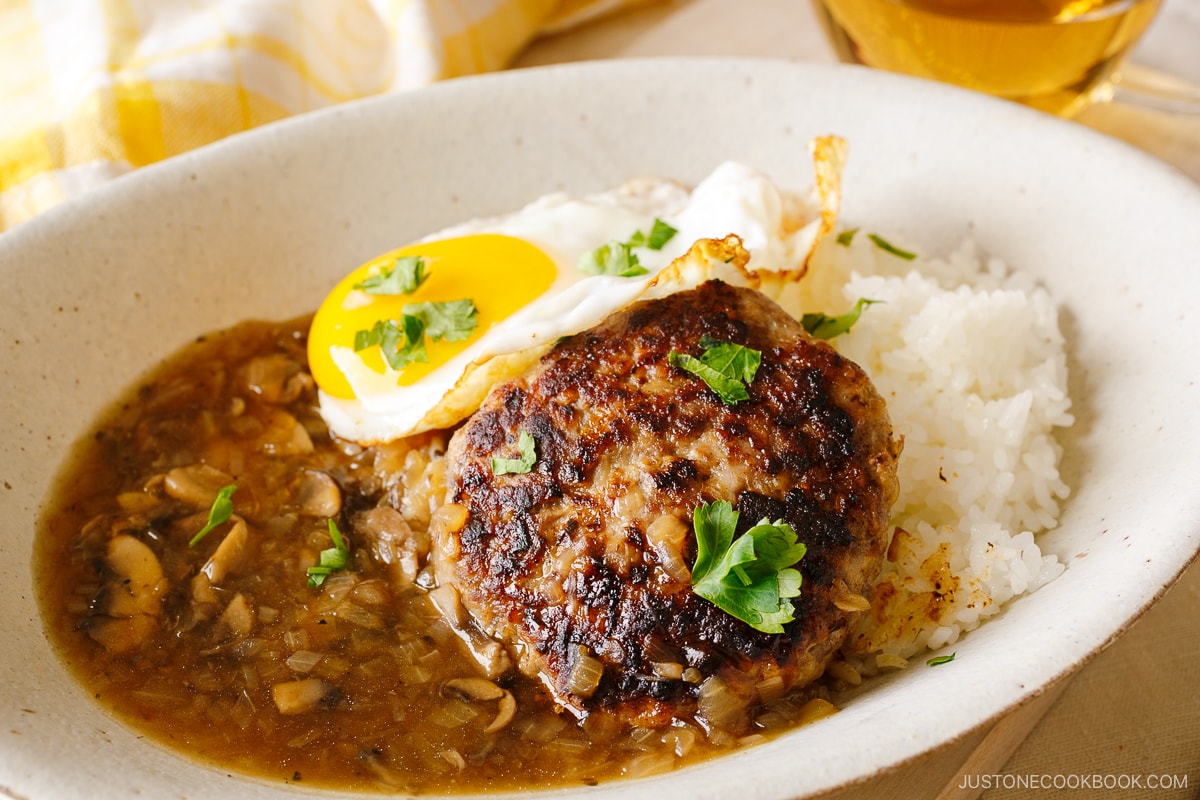
What is Loco Moco?
First, we must talk about the name, of course. How did a burger with a rice dish get this catchy name? What does loco moco mean in Hawaiian? Well, loco is the Spanish word for crazy and moco means burger.
According to one of the popular theories, loco moco was first made in the late 1940s by Ms. Nancy Inouye of the Lincoln Grill restaurant in Hilo, Hawaii. She was asked by a group of young surfers to make them something cheap, good, and extremely filling. Their request was met when she served them a dish with a huge plate of white rice topped with a burger patty and brown gravy!
Satisfied, the surfers named the dish after one of their buddies George Okimoto, whose nickname was “crazy”. George Takahashi, a student at Hilo High School, was studying Spanish at the time and decided to call it loco since it rhymes with moco. So, here we have the story of loco moco.
There are many variations of loco moco, but the traditional loco moco consists of white steamed rice, topped with a juicy hamburger steak, flavorful gravy, and a fried egg. The egg is usually cooked sunny side up so the runny egg yolk adds a yummy richness to the dish.
Besides beef patty, loco moco is sometimes topped with spam, shrimp, bacon, tofu, teriyaki beef and chicken too.
Loco Moco in Japan
Outside of Hawaii, loco moco (ロコモコ) is just as popular in Japan and usually served in cafe-style restaurants, yoshoku (Japanese-western) restaurants, or enjoyed at home. Since Hawaii is no. 1 travel destination for the Japanese, we naturally adopted this delicious dish and made it part of our menu.
However, the typical Japanese version of loco moco is served with thick “hambagu sauce”, which is made of ketchup and Worcestershire sauce (or tonkatsu sauce) instead of traditional gravy made of beef broth or stock. The recipe I’m sharing today is my own take on the traditional loco moco.
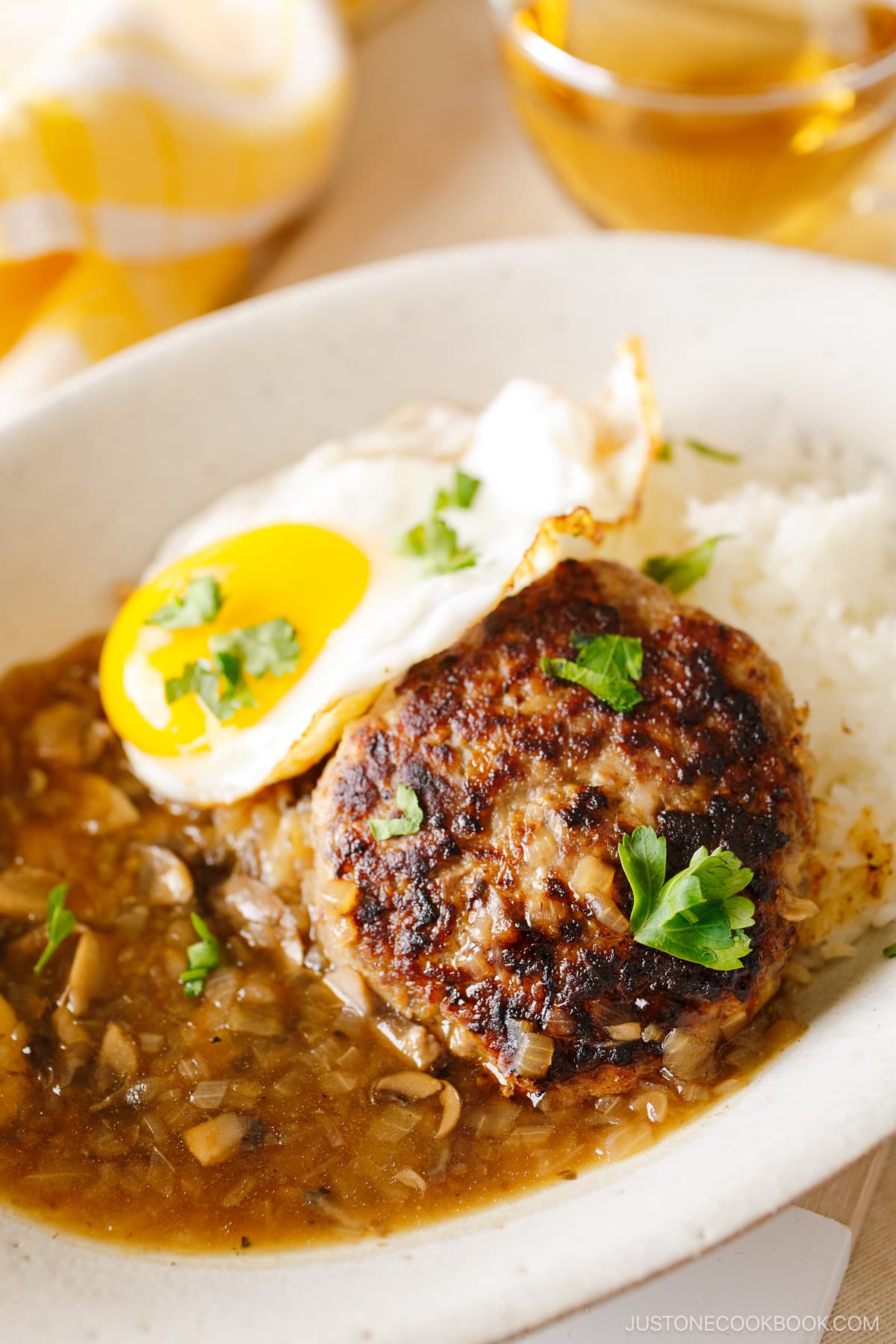
Why You Should Make this Recipe
- Incredibly juicy and tender hamburger patty! I use my Hambagu recipe for the meat patty which uses both ground beef and pork. The ground pork adds additional flavors and makes really juicy patties compared to using ground beef only.
- Caramelized onions for meat patties and gravy. This might seem like an extra step but caramelized onions add a big depth of flavor and sweetness to both meat patties and gravy.
- Easy to make and freezer-friendly! You can store the patties in the refrigerator for 3 days or in the freezer for a month.
How to Make Loco Moco
The Ingredients You’ll Need
- A combination of ground beef and ground pork
- Onion
- Egg
- Panko
- Milk
- Seasonings: Worcestershire sauce, nutmeg, salt, pepper, butter
- Gravy: Button mushrooms, olive oil, beef stock, Worcestershire sauce, soy sauce, salt, pepper, potato/corn starch
The Cooking Steps
- Caramelize the chopped onions and use them for both gravy and hamburger patties.
- Make the gravy in the pot and set aside.
- Make the hamburger patties. The way we make loco moco burgers is very similar to Japanese hambagu steaks.
- Cook the patties and serve with the gravy.
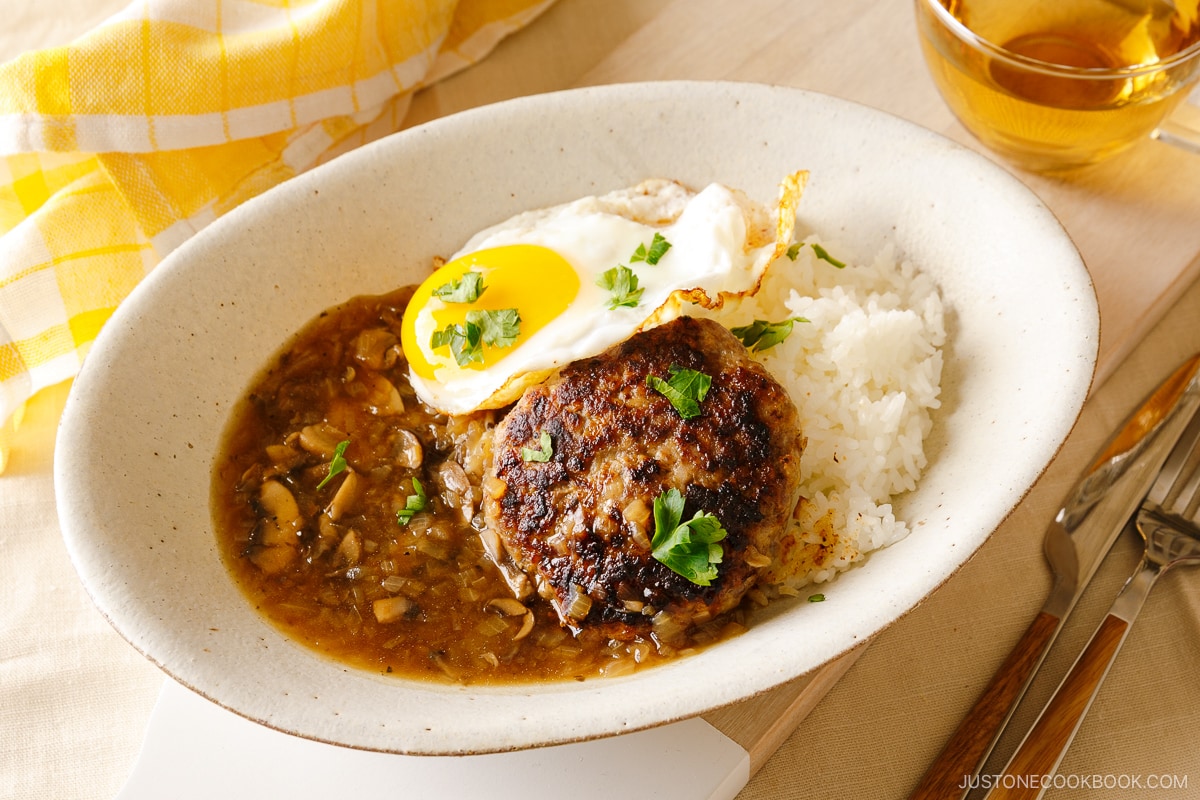
How to Serve Loco Moco
Serve steamed rice on individual plates. Transfer the patties to the plates, pour the gravy, and top with a fried egg. Enjoy immediately!
You can store leftover hamburger patties in an airtight container and keep in the refrigerator for 3 days or in the freezer for a month.
Whether it’s for lunch or supper, this dish is very easy to make and will be ready in less than 45 minutes. It’s a wonderful comfort meal on any day of the week. I hope you enjoy my version of loco moco recipe.
Now, many of my readers are from Hawaii. What’s your favorite style of loco moco and how do you prepare it? Please feel free to share your recipe in the comment below so we all can try it out!
More Hawaiian-Inspired Recipes You’ll Love

Wish to learn more about Japanese cooking? Sign up for our free newsletter to receive cooking tips & recipe updates! And stay in touch with me on Facebook, Pinterest, YouTube, and Instagram.
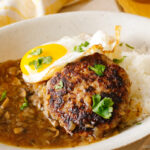
Loco Moco
Video
Ingredients
- 1 onion (divided; for the patties and gravy)
- 1 Tbsp extra virgin olive oil (for sautéing the onion)
For the Gravy (make double if you like extra)
- 6 button mushrooms (3.5 oz, 100 g)
- ½ Tbsp extra virgin olive oil
- 1½ cups beef stock/broth
- 1 tsp Worcestershire sauce
- 1 tsp soy sauce
- Diamond Crystal kosher salt (to taste)
- ⅛ tsp freshly ground black pepper
- 1 Tbsp potato starch or cornstarch
- 1 Tbsp water
For the Hamburger Steak (Hambagu)
- ¾ lb ground beef and pork combination (a mixture of two-thirds ground beef + one-third ground pork)
- ⅓ cup panko (Japanese breadcrumbs)
- 1 large egg (50 g each w/o shell)
- 2 Tbsp milk
- 1 tsp Worcestershire sauce (for the patties)
- ½ tsp nutmeg
- 1 tsp Diamond Crystal kosher salt
- ⅛ tsp freshly ground black pepper
- ½ Tbsp extra virgin olive oil (for cooking)
For the Fried Eggs
- 4 large eggs (50 g each w/o shell)
- ½ Tbsp extra virgin olive oil (for frying)
For Serving
- 4 servings cooked Japanese short-grain rice (4⅓ cups, 660 g)
- 1 sprig parsley (for garnish)
Instructions
- Gather all the ingredients. For the steamed rice, please note that 1½ cups (2 rice cooker cups, 300 g) of uncooked Japanese short-grain rice yields roughly 4 servings (4⅓ cups, 660 g) of cooked rice. See how to cook short-grain rice with a rice cooker, pot over the stove, Instant Pot, or donabe.
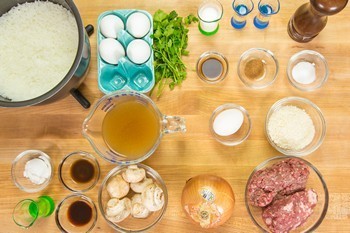
- Mince 1 onion finely. To learn how to finely mince (called mijingiri in Japan), see my tutorial.

- Heat 1 Tbsp extra virgin olive oil in a large pan on medium-high heat and sauté the onion until translucent.

- Turn off the heat. Divide the sautéed onion and use half for the gravy and the other half for the hamburger patties.
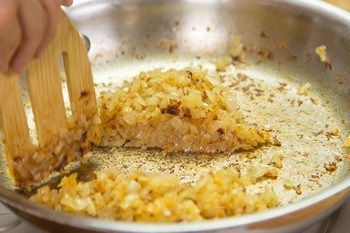
To Make the Gravy
- Cut 6 button mushrooms into thin slices. Heat a small saucepan on medium heat. Then, add ½ Tbsp extra virgin olive oil and the mushrooms and sauté until soft. Add half of the sautéed onion and stir together.

- Add 1½ cups beef stock/broth, 1 tsp Worcestershire sauce, and 1 tsp soy sauce.

- Skim off any foam or scum on the surface. Then, season with Diamond Crystal kosher salt and ⅛ tsp freshly ground black pepper.

- To a small bowl, add 1 Tbsp potato starch or cornstarch and 1 Tbsp water and whisk well to combine. Pour the starch mixture into the gravy and thoroughly mix together. Simmer until the gravy is a bit thicker. Turn off the heat and set aside.

To Make the Patties
- In a large bowl, add ¾ lb ground beef and pork combination and the rest of the sautéed onion. Add ⅓ cup panko (Japanese breadcrumbs), 1 large egg (50 g each w/o shell), 2 Tbsp milk, 1 tsp Worcestershire sauce, ½ tsp nutmeg, 1 tsp Diamond Crystal kosher salt, and ⅛ tsp freshly ground black pepper.

- Knead together well until the mixture becomes sticky and pale. Then, divide into 4 portions for large patties or 6 portions for medium patties.

- For each patty, toss a portion of the mixture from one hand to the other about 5 times; this releases the air inside and prevents cracking during cooking. Then, make an oval-shaped patty. The top should be slightly rounded and not flat. Place on a plate or tray. Repeat with the remaining portions. Cover the patties with plastic wrap and rest them in the refrigerator for at least 30 minutes so that the meat combines well and the fat solidifies.

To Cook the Hamburger Steaks
- Heat a large pan over medium heat, then add ½ Tbsp extra virgin olive oil. Place the patties gently in the pan. (If you‘re doubling the recipe, fry in batches.) Indent the center of each patty with 2 fingers because the centers will rise with the heat. Cook the patties for about 5 minutes. When the patties are nicely browned on the bottom, flip them over. Cover and cook for another 5 minutes to thoroughly cook the inside, adjusting the cooking time depending on the thickness of the patties. At this time, you can reheat the gravy and make the fried eggs with 4 large eggs (50 g each w/o shell) and ½ Tbsp extra virgin olive oil.

To Serve
- Divide 4 servings cooked Japanese short-grain rice on individual plates. Transfer the patties to the plates, pour the gravy on top, and top each with a fried egg. Chop 1 sprig parsley and sprinkle on top for garnish. Serve immediately.

To Store
- You can keep the leftovers in an airtight container and store in the refrigerator for 3 days or in the freezer for a month.
Nutrition

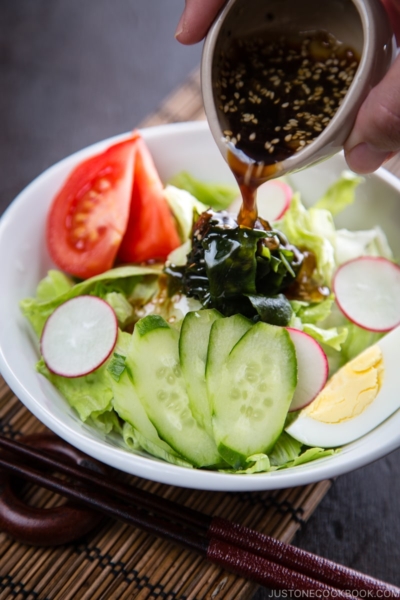
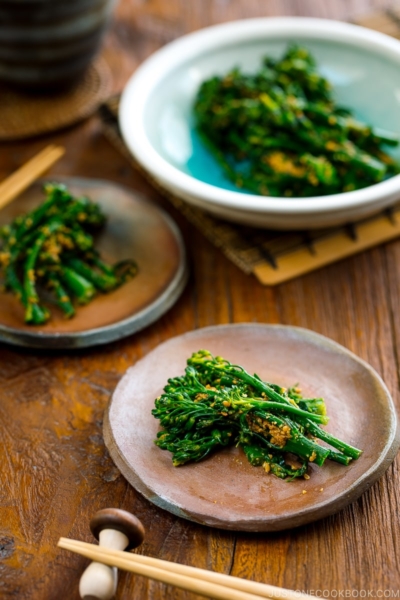
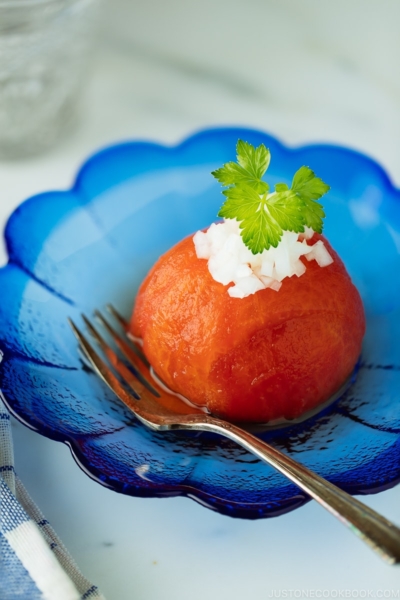
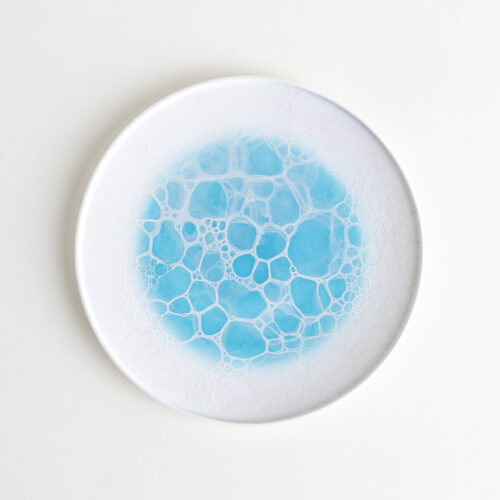
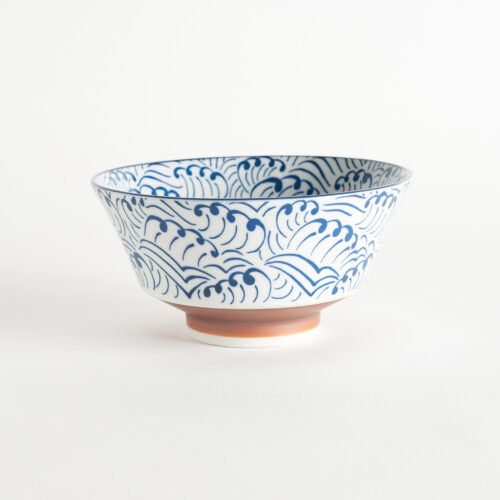
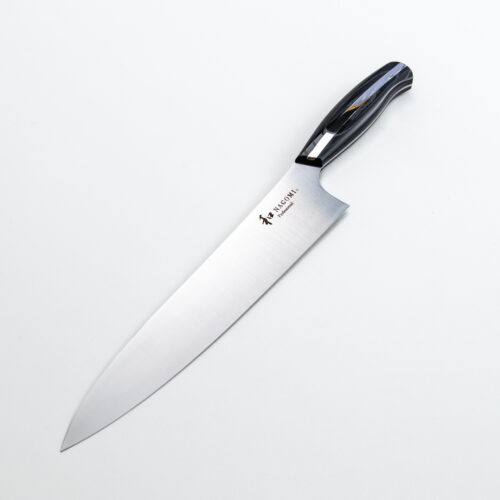
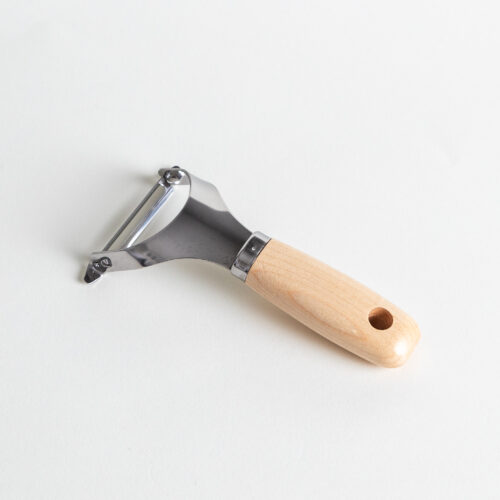

Great recipe but not enough gravy at all! Not even close! At LEAST double the gravy. Moco Loco is all about the gravy.
Hi Mike! We are glad to hear you enjoyed Nami’s recipe!
Thank you for trying her recipe and for your feedback. 🙂
We loved this! Thanks for your support of Maui. My daughter had a cross country meet today and is a food monster after she runs! This really hit the spot!
Hi Jennifer! Thank you so much for joining us.💞
We are glad to hear you and your family enjoyed Nami’s recipe!
Easy and flavorful recipe!
Hi cabbageofwisdom! Wow! Thank you!
We are so happy you enjoyed Nami’s recipe. Thank you so much for sharing your Loco Moco photo with us!
The patties were very delicious and tender. Our gravy came out thicker than the one in your picture. We used potato starch, not corn starch. Wonder if that made a difference.
Hello, Albert! Thank you very much for trying Nami’s recipe and sharing your results with us!
The consistency may vary depending on the type of starch and where you live. If it comes out too thick the next time, you can simply add more water to thin it out.
We hope this suggestion helps you in your future attempts. Thank you for submitting your Loco Moco photo!